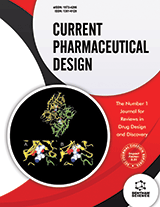Abstract
Nowadays, the scientists from different disciplines have focused their attentions to new anticancer drug design for cancer chemotherapy. An effective anticancer drug should ensure the selective drug incorporation into the targeted tumor cells without principally incorporation into the normal cells. So, the targeted tumor cells can selectively be damaged by the cytotoxic effectiveness of the drug. The basic principles of drug design have involved “prodrug” concept, which means a chemical agent which is not itself active as an anticancer drug, but it can be transformed to an active form after its administration. Prodrugs can finally be activated onto the tumor cells by some kind of enzymes. In this context, the activation of glucuronide prodrugs by b-glucuronidase have a large potential applications in cancer chemotherapy. On the other hand, combined chemo- and radio-therapy of cancer (CCRTC) concept aims to combine the cytotoxicity of an aglycone with the radiotoxicity of an appropriate radionuclide on the same prodrug. So, the cytotoxic and radiotoxic effectiveness will be able to be concentrated into the same tumor cell to increase obviously its damage. For experimental realization of this concept an effective anticancer prodrug should be radiolabeled with a radionuclide having high level of radiotoxic effectiveness such as Auger and/or α-emitter radionuclides. Iodine-125 and astatine-211 are very interesting radionuclides as being effective Auger and/or α-emitters. Briefly, the glucuronide prodrugs radiolabeled with iodine-125 or astatine-211 promise to be designed very effective anticancer agents in the future applications of cancer chemotherapy.
Current Pharmaceutical Design
Title: Potential Use of Radiolabeled Glucuronide Prodrugs with Auger and/or Alpha Emitters in Combined Chemo- and Radio-Therapy of Cancer
Volume: 6 Issue: 11
Author(s): Turan Unak
Affiliation:
Abstract: Nowadays, the scientists from different disciplines have focused their attentions to new anticancer drug design for cancer chemotherapy. An effective anticancer drug should ensure the selective drug incorporation into the targeted tumor cells without principally incorporation into the normal cells. So, the targeted tumor cells can selectively be damaged by the cytotoxic effectiveness of the drug. The basic principles of drug design have involved “prodrug” concept, which means a chemical agent which is not itself active as an anticancer drug, but it can be transformed to an active form after its administration. Prodrugs can finally be activated onto the tumor cells by some kind of enzymes. In this context, the activation of glucuronide prodrugs by b-glucuronidase have a large potential applications in cancer chemotherapy. On the other hand, combined chemo- and radio-therapy of cancer (CCRTC) concept aims to combine the cytotoxicity of an aglycone with the radiotoxicity of an appropriate radionuclide on the same prodrug. So, the cytotoxic and radiotoxic effectiveness will be able to be concentrated into the same tumor cell to increase obviously its damage. For experimental realization of this concept an effective anticancer prodrug should be radiolabeled with a radionuclide having high level of radiotoxic effectiveness such as Auger and/or α-emitter radionuclides. Iodine-125 and astatine-211 are very interesting radionuclides as being effective Auger and/or α-emitters. Briefly, the glucuronide prodrugs radiolabeled with iodine-125 or astatine-211 promise to be designed very effective anticancer agents in the future applications of cancer chemotherapy.
Export Options
About this article
Cite this article as:
Unak Turan, Potential Use of Radiolabeled Glucuronide Prodrugs with Auger and/or Alpha Emitters in Combined Chemo- and Radio-Therapy of Cancer, Current Pharmaceutical Design 2000; 6 (11) . https://dx.doi.org/10.2174/1381612003399798
| DOI https://dx.doi.org/10.2174/1381612003399798 |
Print ISSN 1381-6128 |
| Publisher Name Bentham Science Publisher |
Online ISSN 1873-4286 |
 3
3
- Author Guidelines
- Bentham Author Support Services (BASS)
- Graphical Abstracts
- Fabricating and Stating False Information
- Research Misconduct
- Post Publication Discussions and Corrections
- Publishing Ethics and Rectitude
- Increase Visibility of Your Article
- Archiving Policies
- Peer Review Workflow
- Order Your Article Before Print
- Promote Your Article
- Manuscript Transfer Facility
- Editorial Policies
- Allegations from Whistleblowers
- Announcements


























